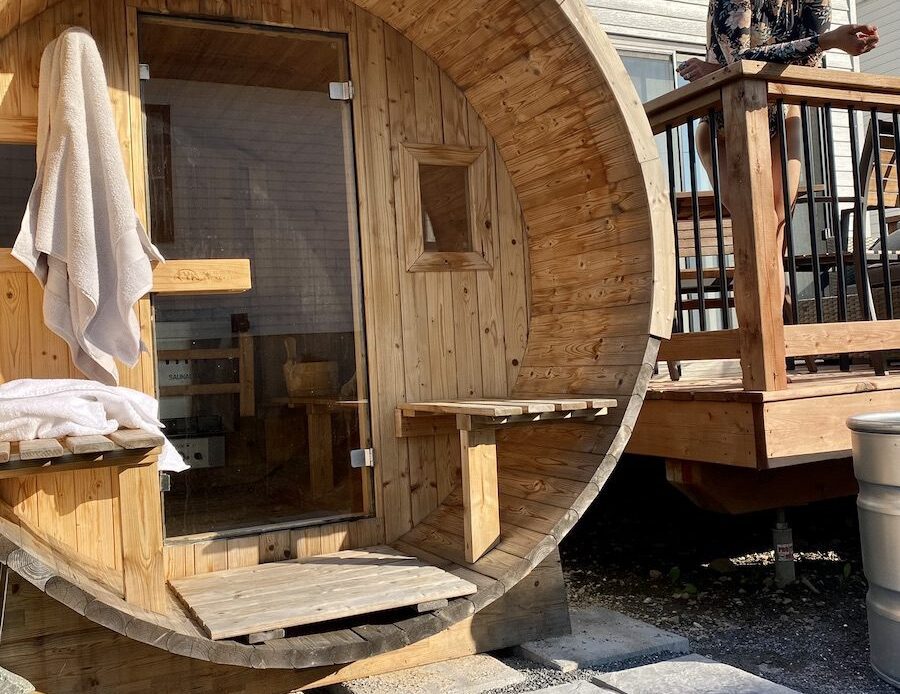Maybe it’s the extra cold weather this winter or maybe it’s just my sore, aging body, but I’ve been noticing a lot more athletes incorporating saunas into their training lately. And not, as far as I can tell, for the head adaptation effect that I’d expect.
One of these athletes is Haley Smith. The Ontario Olympian, recent Life Time Grand Prix winner (2022) and, now, Trek Driftless racer and her partner Andrew L’Esperance are sauna regulars, won over by the science backing incorporating a post-workout sweat into their training program. There are many uses for saunas, like heat acclimation, stress relief and, as one friend with a DIY backyard kit said, its just nice to use. Smith, as a professional athlete, is looking for a more focused effect on altitude or heat, depending on the race, and inflammation. We caught up with the Canadian over the phone to find out more about the science behind saunas.
Canadian MTB: So there are lots of different recovery modalities out there. What put you onto sauna use? Was it an outcome you were looking for? A problem you were trying to find a solution to? Or just a newer modality that looked interesting?
Haley Smith: First of all, a lot of the recovery modalities out there don’t actually have a ton of science that can definitively say they do something. For saunas, the science actually is pretty definitive. There is a lot of actual evidence of the ways saunas have an impact, compared to stretching or foam rolling or Normatec boots, where the science isn’t as clear.
The second part is that we were looking for two specific outcomes. The first was actually a training adaptation not recovery. We’re using it for simulated altitude. The second aspect is for helping with inflammation.
I think some people would be surprised to hear saunas being used for altitude and inflammation instead of, say, heat adaptation. Is this newer? Or a different outcome of the same physiological effect?
It’s a pretty similar method of use and honestly a pretty similar adaptation to what you’re after when you’re doing heat training. But it is a little bit of a different, or a more targeted outcome that you’re after. We have used it for heat training in the past and it’s a very similar protocol to when you use it for altitude.
The heat adaptation process is pretty much maxed out after 14 days. The benefits you get for heat training from the sauna are…
Click Here to Read the Full Original Article at Canadian Cycling Magazine…

